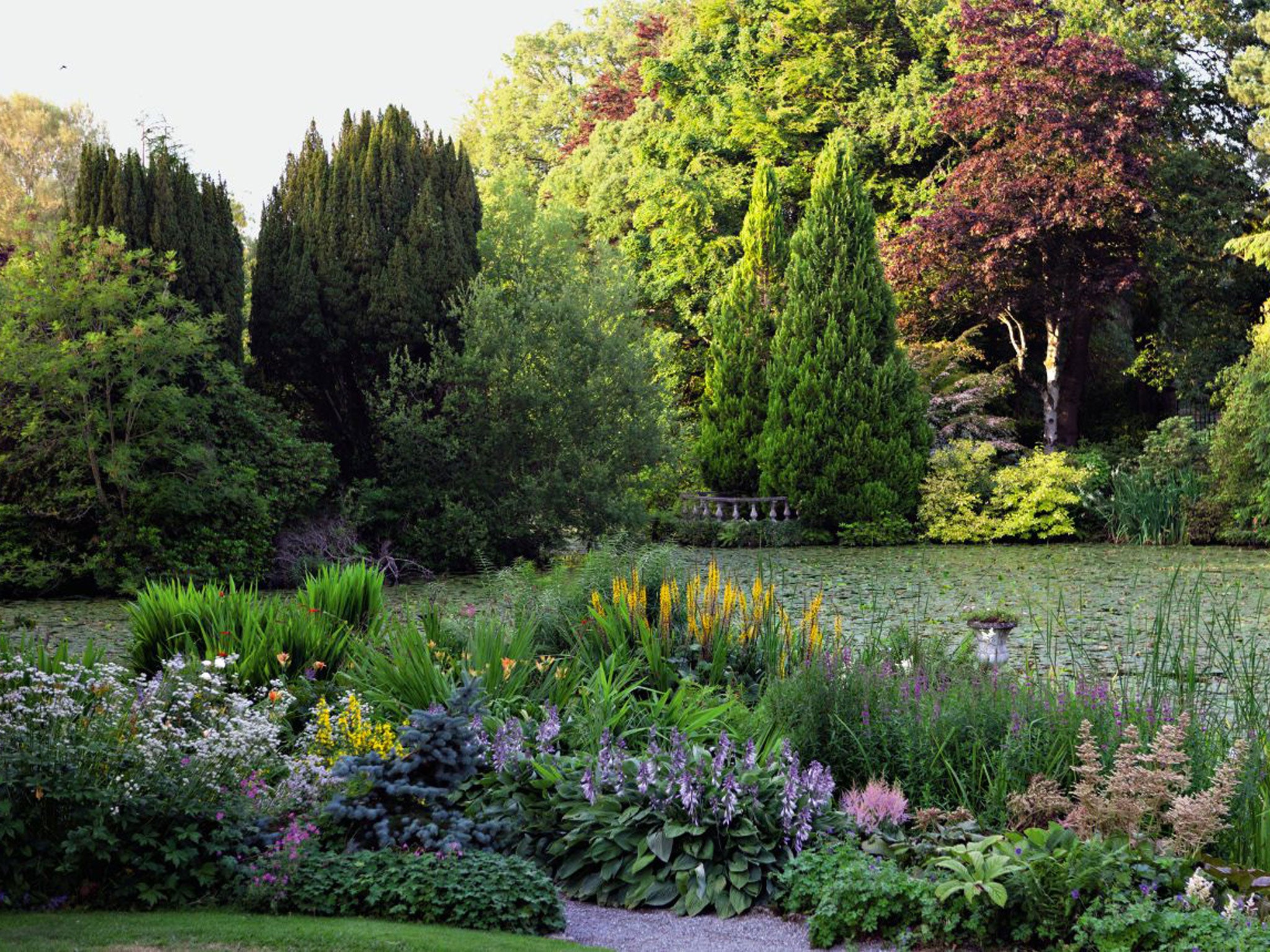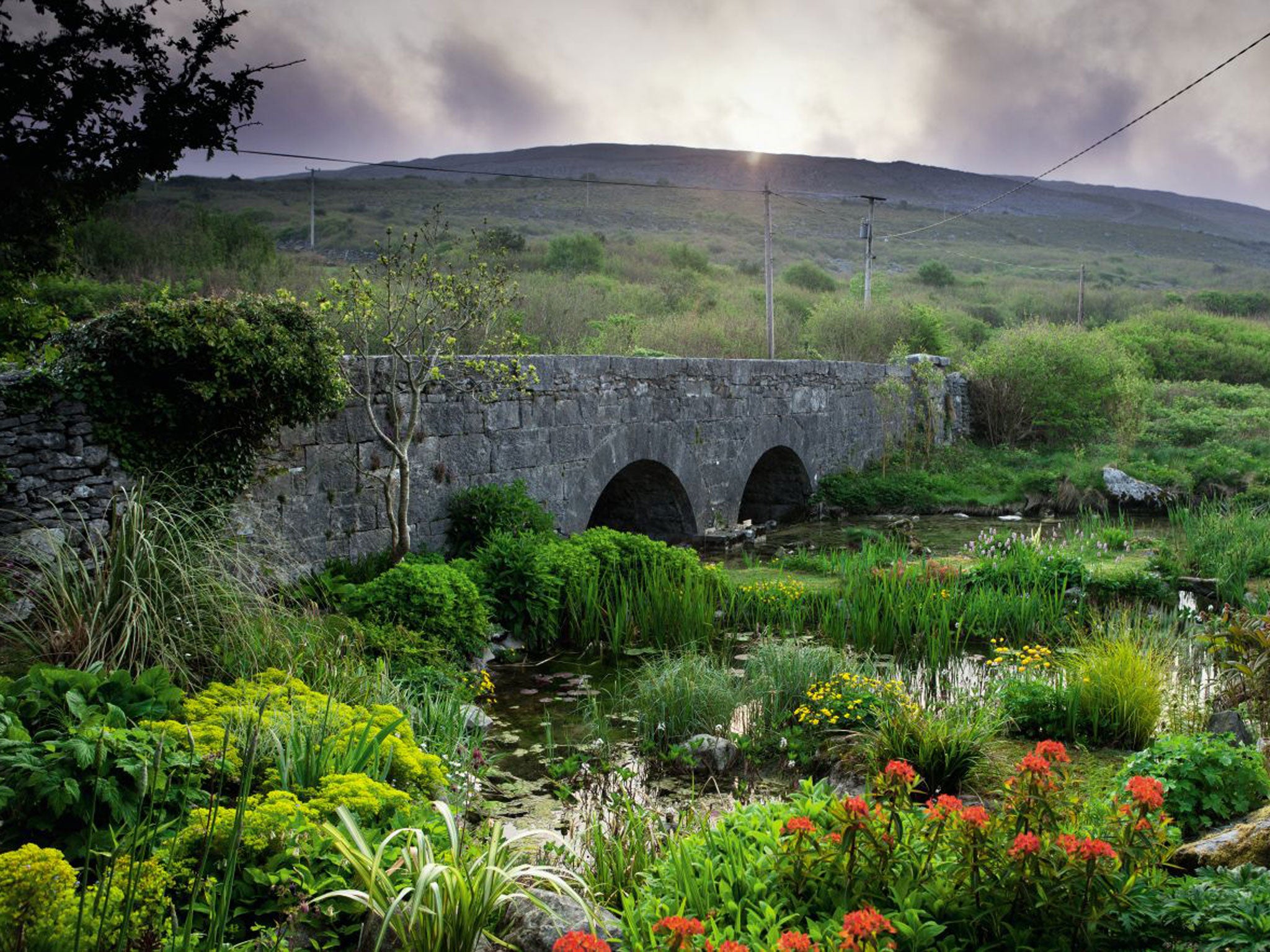Anna Pavord: 'There is a special joy to be found in exploring the lush gardens of Ireland'
They have a character all of their own: relaxed, rolling and replete with narrative, says our gardening correspondent

Your support helps us to tell the story
From reproductive rights to climate change to Big Tech, The Independent is on the ground when the story is developing. Whether it's investigating the financials of Elon Musk's pro-Trump PAC or producing our latest documentary, 'The A Word', which shines a light on the American women fighting for reproductive rights, we know how important it is to parse out the facts from the messaging.
At such a critical moment in US history, we need reporters on the ground. Your donation allows us to keep sending journalists to speak to both sides of the story.
The Independent is trusted by Americans across the entire political spectrum. And unlike many other quality news outlets, we choose not to lock Americans out of our reporting and analysis with paywalls. We believe quality journalism should be available to everyone, paid for by those who can afford it.
Your support makes all the difference.I've just got back from Ireland where I was one of the speakers at the Garden Festival in Carlow. It runs every year from late July to early August, but Carlow is new territory for me and I did not know either of the gardens I went to. The first was Sheila Reeves-Smyth's place at Hardymount in Tullow, where you are welcomed in by a stupendous beech tree on one side and an equally monumental sweet chestnut – one of the biggest in the country – on the other.
One of the reasons I love Ireland so much is its particularity. You see it in Irish silver, glass, furniture and architecture. The design, the details are just not quite like anything you see in England. I thought this as soon as I arrived at Hardymount, where the house, a handsome Regency box, has the most elegant rounded ends, a style I've never seen before. Irish gardens are different too, often much more relaxed than gardens are in England. Their owners might open them, as Mrs Reeves-Smyth does, but you don't feel that the place has been poked and primped for the occasion.
At Hardymount, the focus is the old walled garden, which unusually lies right next to the house. Through the door in the wall, you can see a splendidly rampageous border, with monkshoods and day lilies, campanulas and daisies punctuated with groups of sky-blue agapanthus.
Old espaliered apple trees spread their branches alongside what must have been one of the original paths in the walled garden. At one point, a huge clump of Lobelia tupa stretched its red flower spikes up among the leaves and fruit of the apple trees. I've never grown this drama queen, but I was so impressed, I think I must. It flowers from mid or late summer right the way through to the first frosts, which usually cut it down (although not fully hardy, it will take temperatures down to −5C). Here in Ireland it would easily grow up to two metres in a season, the lippy, brick-red flowers held out all round the strong purplish red stems. The foliage is excellent, soft, almost furry in texture, with big leaves of a soft grey-green.
Mrs Reeves-Smyth is 89 and still does all her own gardening. I wonder what it is about the Carlow air, because at nearby Altamont, the other garden I visited, the legendary Corona North was planting oak trees up until a week before she died, well into her seventies. For a taste of her extraordinary life, check out the obituary that The Independent published on 13 February 1999.
The approach to Altamont is through a magnificent avenue of ancient beech trees, and at first you have the impression you are in a formal garden. The stone house sits at the top of a sloping lawn, with bulging arches of clipped yew stretching over the path that leads down to the lake. Here, Corona planted one of the first dawn redwoods (Metasequoia glyptostroboides) that Ireland had ever seen. Trees were her passion, and down in the damp glades alongside the River Slaney, she established groves of dogwoods and acers, as well as a big collection of oak trees.

Here you'll find the pin oak (Quercus palustris), the red oak (Quercus rubra) and a Quercus libani with wonderfully glossy leaves rather like those of a sweet chestnut. Formality is entirely left behind by the time you get down into this part of the garden, where huge jumbles of granite boulders, dumped by the last ice age, still sit among the trunks of fancy maples, overlaid with moss and fringed with ferns.
Altamont features in a new book, The Irish Garden, by Jane Powers. Its images are hard to resist: a meadow of buttercups washing up to the handsome front of Salthill House in County Donegal; Carl Wright's astonishing garden "on loan from a savage landscape" in the Burren, County Clare; the enchanting cottage orné superbly restored by potter Nicholas Mosse and his wife in the glen at Kilfane, County Kilkenny. I first went to Kilfane more than 20 years ago and still dream of perhaps persuading the Mosses to let me sleep a night in this little cottage, filled with the sound of a waterfall that, at first, they didn't know they had.
The waterfall, silent and waterless when they first arrived in Kilfane, had once formed the centrepiece of a then fashionably melancholy woodland walk, laid out in the 1790s by Sir Richard Power, who owned Kilfane.
This was not a garden in the modern sense. It was a natural landscape, carefully tweaked at various points, to provide views that would inspire, impress and frighten (but only in the most delicious way). Through thickly planted woodlands of beech, sweet chestnut, oak and Scots pine, Power laid out winding paths that plunged down into a natural ravine. He made bridges to cross the stream that crashed between the rugged boulders.
Eventually, the path emerged at a hidden glade where there was the obligatory hermit's cell and a small, thatched retreat – the cottage orné of which I still dream. After shuddering pleasurably in the damp of the grotto, Power's guests could take tea in the cottage, before returning by a circular route to the house.
A series of sketches, unearthed by the Mosses, show the Kilfane glen and waterfall at its peak in 1804 – yet only 15 years later it was being described as "somewhat of a has-been". But Power had worked hard to contrive the Kilfane waterfall, constructing a mile-long conduit to carry a stream to the top of the rockface in front of the little cottage. Getting the water to flow again was the first object of the Mosses' restoration programme.
Then they found the footings of the original cottage porch, familiar to them from the 1804 drawings. Although by then buried under a foot and a half of debris, they gave vital clues as to the orientation of the cottage. "The rest," says Susan Mosse, "was easy." I'm left wondering what "difficult" might mean to the magnificent Mosses.
Hardymount Gardens, Tullow, Co Carlow, open daily until the end of August – +353 (0)59 915 1769; Altamont Gardens,Tullow, open daily – +353 (0)59 915 9444; Kilfane glen, Co Kilkenny is open daily until the end of August – visit kilfane.com
Photographs by Jonathan Hession, from 'The Irish Garden' by Jane Powers (Frances Lincoln, £40)
WEEKEND WORK
WHAT TO DO
* Increase stocks of hybrid berries such as loganberry and tayberry by tip layering. Bury the tip of a shoot about 15cm/6in down in the soil, and firm the earth around it. By spring it should be well rooted.
* Pick and prune late-fruiting blackcurrants in one fell swoop by cutting back all the stems carrying berries to a strong new shoot. On old bushes or those which do not have much non-fruiting growth, cut out about a third of the branches entirely, taking them back to the base.
* Rambler roses and other climbing roses that only have one flush of flower should be pruned as soon as the flowers fade. With ramblers, take out one old stem for each new one that has grown. With climbers, cut just above a vigorous new side-shoot.
* Cut back helianthemums (rock roses). Delphiniums may give a second late show if you cut down the old flowered stems.
WHAT TO SEE
Anna Atkins, who was born in Kent in 1799, was one of the first English botanists to experiment with photography, often involving plants. Some of her work is in the Horniman Museum in London, complemented by a series of plant silhouettes by Edward Chell. Until 6 December; horniman.ac.uk
Join our commenting forum
Join thought-provoking conversations, follow other Independent readers and see their replies
Comments